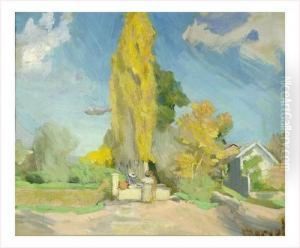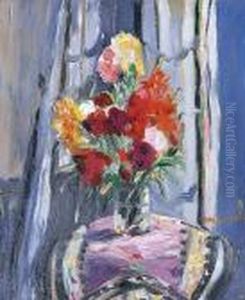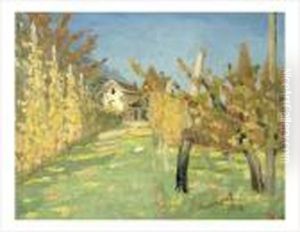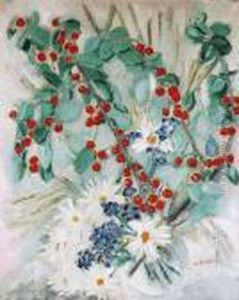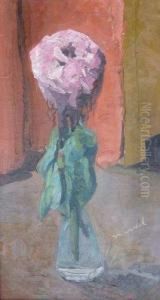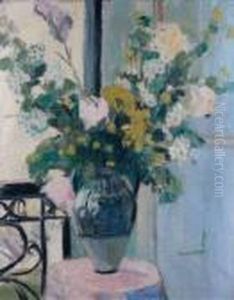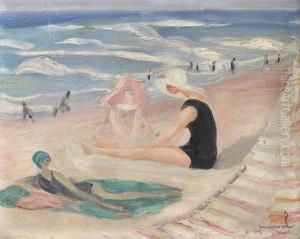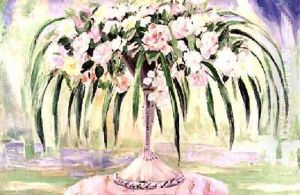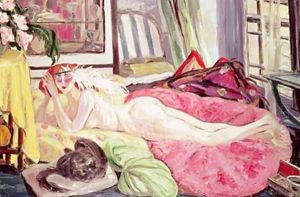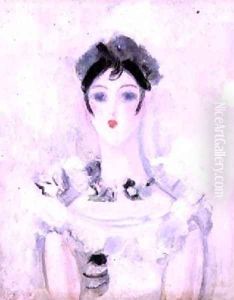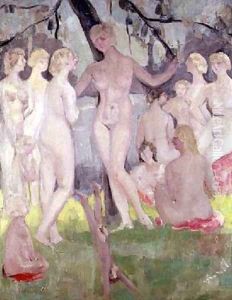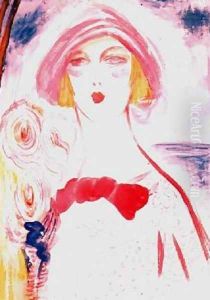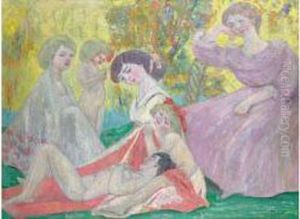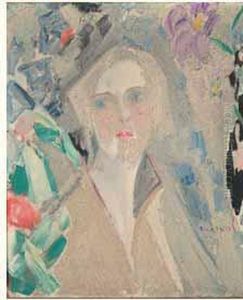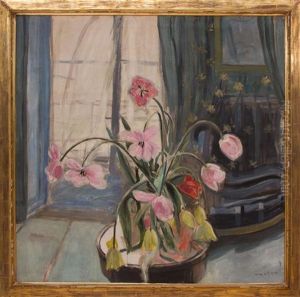Jacqueline Marval Paintings
Jacqueline Marval, born Marie Josephine Vallet, was a notable French painter and one of the key figures in the early 20th-century avant-garde movement. She was born on October 19, 1866, in Quaix-en-Chartreuse, Isère, France. Initially, Marval began her career as a schoolteacher, but her life took a significant turn when she decided to move to Paris in the late 1890s to pursue her passion for art.
In Paris, Marval started to paint and quickly became associated with the avant-garde circles, including the Fauvists and the Section d'Or group. Her vibrant color palette and bold brushwork were in line with the Fauvist movement, which included artists like Henri Matisse and André Derain. However, Marval developed her unique style that set her apart from her contemporaries. She was particularly known for her depictions of women, floral still lifes, and scenes from the circus and theater.
Marval's works were exhibited in several important shows, including the Salon d'Automne and the Salon des Indépendants. In 1902, she had her first significant success at the Salon des Indépendants with her painting 'Les Odalisques,' which depicted five nude female figures and drew the attention of critics and the public alike. Her work was appreciated for its decorative quality and the confident use of color.
Despite her initial success, Marval faced challenges as a woman artist in a male-dominated field. Nonetheless, she continued to exhibit her work and gained recognition among her peers. Her personal life was also intertwined with the art world; she was romantically involved with the artist Jules Flandrin and had close relationships with other artists and poets of the time.
Jacqueline Marval's career spanned several decades, during which she produced a significant body of work that contributed to the development of modern art in France. She passed away on May 28, 1932, in Paris, leaving behind a legacy that has been re-evaluated and celebrated in recent years for its innovation and influence on the art movements of her time.


